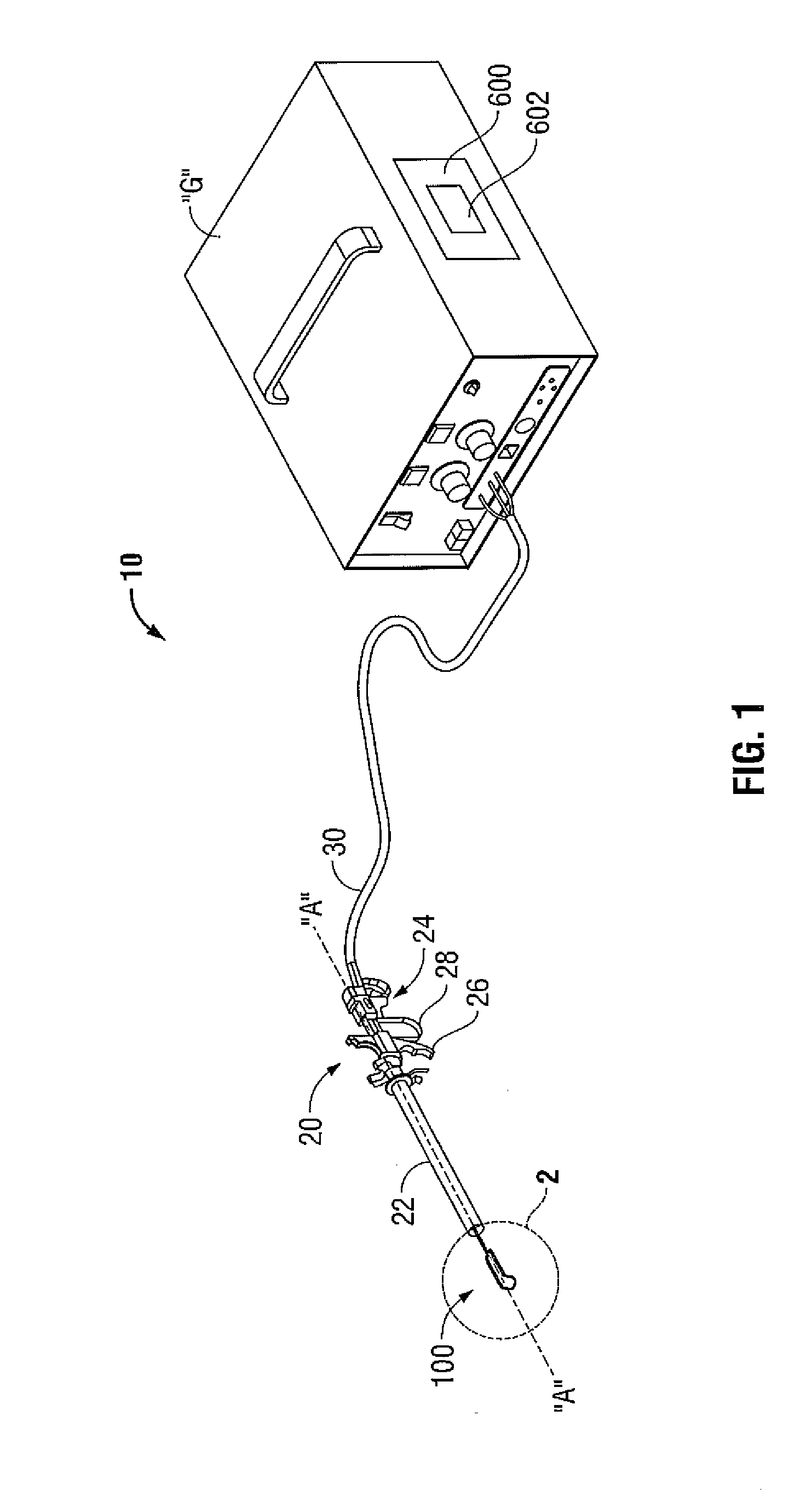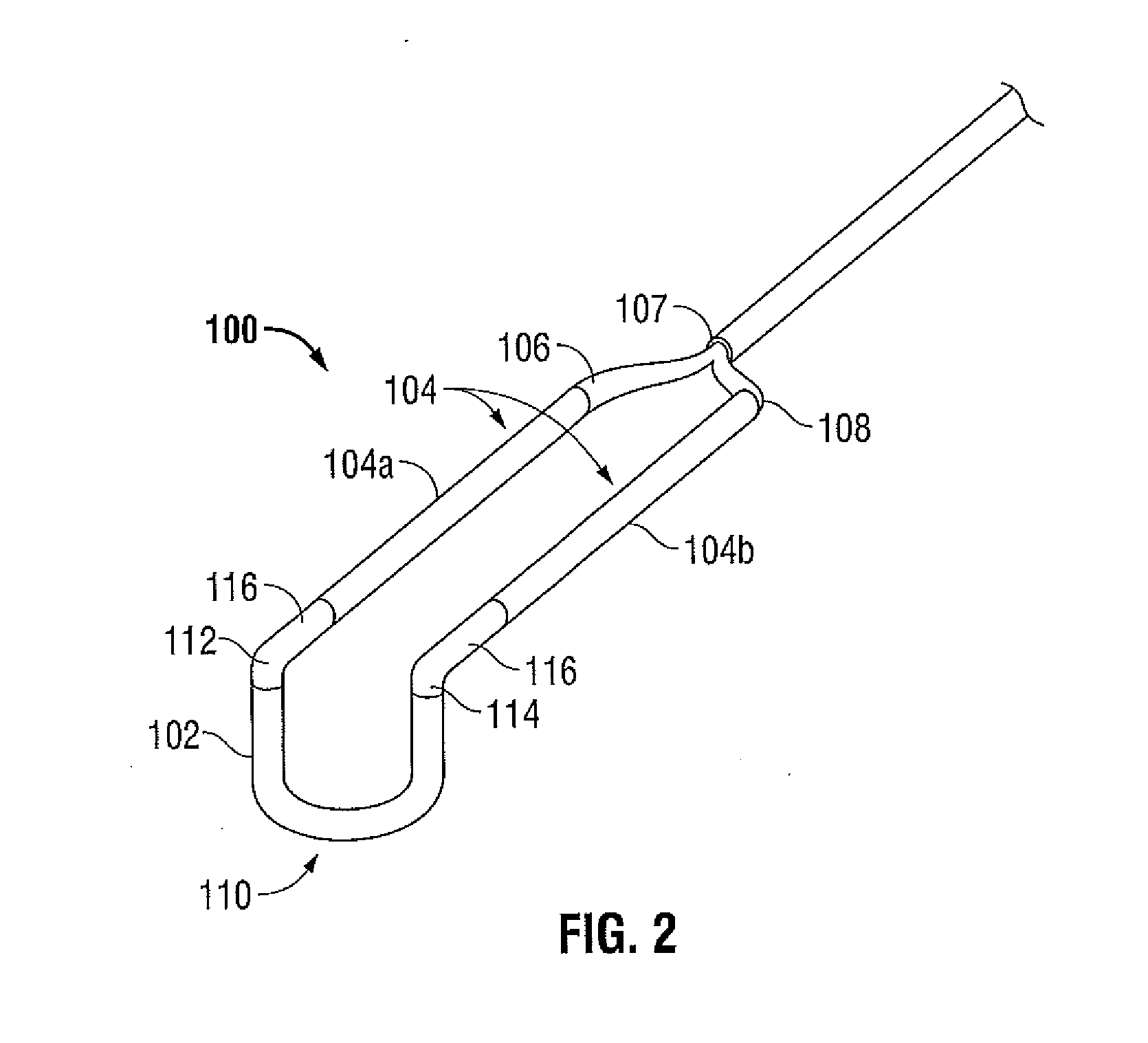Electrosurgical electrodes
a technology of electrodes and electrodes, applied in the field of electrosurgical electrodes, can solve the problems of monopolar electrocautery systems, collateral damage to adjacent tissue, unwanted stimulation of nervous and/or muscle systems, etc., and achieve the effects of reducing the energy required for bubble nucleation, promoting vapor bubble adhesion, and hindering current flow
- Summary
- Abstract
- Description
- Claims
- Application Information
AI Technical Summary
Benefits of technology
Problems solved by technology
Method used
Image
Examples
Embodiment Construction
[0032]Particular embodiments of the presently disclosed electrosurgical electrode are described in detail with reference to the drawing figures wherein like reference numerals identify similar or identical elements. As used herein, the term “distal” refers to that portion of the electrosurgical electrode which is further from the user or surgeon while the term “proximal” refers to that portion of the electrosurgical electrode which is closer to the user or surgeon.
[0033]FIG. 1 sets forth a side, perspective view of an electrosurgical system 10 including an electrosurgical instrument 20 intended for use with an electrosurgical electrode assembly 100 constructed in accordance with one embodiment of the present disclosure. In the embodiment illustrated in FIG. 1, the electrosurgical instrument is a resectoscope 20. The resectoscope 20 may be any suitable type of resectoscope and may be operated in bipolar or monopolar modes. While the following description will be directed towards a re...
PUM
 Login to View More
Login to View More Abstract
Description
Claims
Application Information
 Login to View More
Login to View More - R&D
- Intellectual Property
- Life Sciences
- Materials
- Tech Scout
- Unparalleled Data Quality
- Higher Quality Content
- 60% Fewer Hallucinations
Browse by: Latest US Patents, China's latest patents, Technical Efficacy Thesaurus, Application Domain, Technology Topic, Popular Technical Reports.
© 2025 PatSnap. All rights reserved.Legal|Privacy policy|Modern Slavery Act Transparency Statement|Sitemap|About US| Contact US: help@patsnap.com



